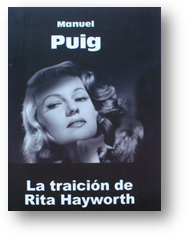
Given the criticisms that have targeted magical realism for its easy descent into cheap exoticism and even kitsch–see for instance Julian Barnes’s complaint about the “package-tour baroque”– it’s perhaps surprising to remember that Cien años de soledad ends in such apocalyptic manner: with a mother bleeding to death, her newborn baby eaten by ants, and a hurricane of Biblical proportions that destroys Macondo and its entire fictional universe, all of which is to be “exiled from the memory of men” (549 [417]). There is little here in the way of consolation or hope. It’s closer to James Ellroy or Cormac McCarthy than to the gentle amiability that we expect of the always-smiling García Márquez. Of course, in some ways the book’s concluding gesture is futile: Macondo is far from wiped out from its readers’ memories. And despite the prediction that “everything written” in the manuscripts that describe and predict this holocaust–and so, by implication, everything that’s written in the novel itself–“was unrepeatable from time immemorial and forever more” (550 [417]), there have been innumerable attempts to copy and adapt the magical realist style, with more and less success, from Salman Rushdie to Laura Esquivel. Indeed, if anything tends to be forgotten about Cien años, perhaps it is its devastating climax and the symbolic self-destruction of everything that has come before. It is the dark side of magical realism, its grotesque horror, that all too quickly fades from the reader’s mind, or perhaps is simply not taken seriously enough.
Meanwhile, this final claim that the novel is somehow an unrepeatable event is both an impossible paradox and something of a self-fulfilling prophecy. For Cien años is indeed a singular book, and its astonishing combination of equally enormous critical and commercial success has seldom if ever been duplicated: not by any other of the novelists of the Boom, or even by García Márquez himself. But it is precisely its uniqueness that has ensured that it has never lacked for imitators. No wonder that Barnes or the writers later associated with the “McOndo” movement should plead for a stop to the proliferating repetitions of something like (but not like enough) One Hundred Years of Solitude, whose nadir was probably The War of Don Emmanuel’s Nether Parts, by self-confessed “Márquez parasite” Louis de Bernières. More fundamentally, Cien años is also largely a book about (indeed, obsessed with) repetition, and it goes against the novel’s own logic that it should end with such an absolute prohibition of duplication and reiteration. After all, it is the failure of such a prohibition–the injunction against the Buendía family’s “original sin” of incest–that sets its plot moving and drives it forward, as the narrative is full of every variation of incestuous desire until finally the last of the line, Amaranta Ursula and her nephew Aureliano Babilonia, come together and produce the foretold offspring with the tail of a pig. However much you try to do something different and avoid the mistakes of the past, that past continues to haunt you. Indeed, it is perhaps only because by the end the very atmosphere of Macondo is so full of the ghosts of the motley cast of characters that have wandered through the book’s pages, that in the end García Márquez can only end the thing by shouting “enough!” and bringing on a cataclysmic hurricane that will tear the whole place down.
For another irony is that this novel, whose title tells us it is concerned with solitude, does in fact, and thanks in part to its proliferating repetitions, present us with what can only be called a multitude. Even at the end, when Aureliano is practically the only man left in town, the very objects that surround him invoke the continued presence of other lives that live on through shared habits. He sits in a rocking chair, for instance, that is “the same one in which Rebeca had sat during the early days of the house to give embroidery lessons, and in which Amaranta had played Chinese checkers with Colonel Gerineldo Márquez, and in which Amaranta Ursula had sewn the tiny clothing for the child” (546 [414]). His response to feel oppressed under “the crushing weight of so much past” (546 [414]); this may well be a bad multitude. But the point is that his problem is hardly solitude per se, or at least not in any simple sense. Indeed, more generally this is a book that is characterized by excess and overindulgence more than anything else. Indeed, it would be no less misleading if it had the title Cien años de plenitud.
This is, after all, also a book that clearly has ambition to be a “total novel”–another reason for it ultimately to declare that it can never be done again–and in service of that (itself, excessive) ambition, it overflows. It’s not just one multitude, but many: a multitude of Aurelianos and José Arcadios, of butterflies and beauties, of inventions and apparatuses, of firing squads and wars, of gypsies and of bananas and caramels, of flowers and books, of chamber pots and doubloons, of merchants and mistresses, of (mis)interpretations and mistakes, of solitudes (yes, solitudes, too) and friendships. Everything is singular but nothing is single: another will always come along in due time. If anything, Macondo’s problem (and that of its inhabitants) is that it is never alone, that there is no way of avoiding or preventing the various forces and energies that sweep through it. Even shutting oneself away (as so many characters repeatedly do) is simply embedding oneself in the machine, often enough to invest still further in the formidable cycles of creation, production, and destruction that drive the multitude. The task, then, is less to resist the multitudes than to determine which are bad (pestilential or merely kitsch) and which are good, enhancing life in all its myriad incarnations.


 Berto escribe una carta agria y venenosa a su hermano Jaime, el padre de Héctor residiendo en España y la tira a la basura pues el destinatario no es merecedor del gasto de franqueo. Así termina esta obra donde el viento y el polvo se arremolinan como las pasiones, las represiones y tramoyas de los habitantes del poco insigne pueblo pampeano. No puedo ocultar mi sorpresa y desencanto con el final y la ausencia de conexión entre el título y la trama. ¿Cuál fue la conexión entre la “diosa” de Hollywood y las mujeres del infernal Vallejos? La breve referencia a la actriz está en boca de Toto, quien luego de haber visto la película “Sangre y arena” junto a su papá, se vuelve un cómplice en la admiración que comparten: “papá decía que le gustaba Rita Hayworth más que ninguna artista, y a mí me empieza a gustar más que ninguna también” (44). Esta efímera mención me hizo indagar un poco y tropecé con una entrevista a Manuel Puig en la cual el entrevistador compartía mi mismo interrogante:
Berto escribe una carta agria y venenosa a su hermano Jaime, el padre de Héctor residiendo en España y la tira a la basura pues el destinatario no es merecedor del gasto de franqueo. Así termina esta obra donde el viento y el polvo se arremolinan como las pasiones, las represiones y tramoyas de los habitantes del poco insigne pueblo pampeano. No puedo ocultar mi sorpresa y desencanto con el final y la ausencia de conexión entre el título y la trama. ¿Cuál fue la conexión entre la “diosa” de Hollywood y las mujeres del infernal Vallejos? La breve referencia a la actriz está en boca de Toto, quien luego de haber visto la película “Sangre y arena” junto a su papá, se vuelve un cómplice en la admiración que comparten: “papá decía que le gustaba Rita Hayworth más que ninguna artista, y a mí me empieza a gustar más que ninguna también” (44). Esta efímera mención me hizo indagar un poco y tropecé con una entrevista a Manuel Puig en la cual el entrevistador compartía mi mismo interrogante: